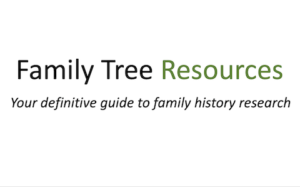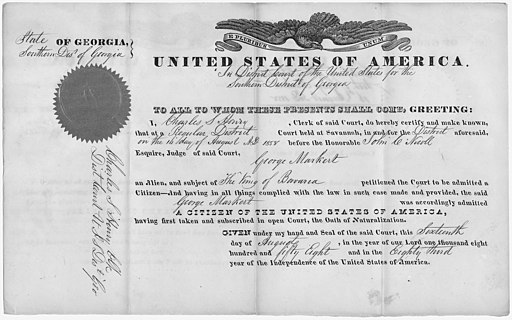Millions of people have immigrated to the US over the last two centuries, resulting in a melting pot of cultures, languages, and belief systems. But discovering the precise date or year your ancestors immigrated can be challenging due to the high volume of records.
Here’s how to learn when your ancestors became US citizens:
- Ask your relatives for information about family heritage.
- Search passenger records from your ancestor’s origin country.
- Browse US immigration records for information about your ancestors.
- Utilize virtual family trees to discover immigration dates.
- Discover your ancestor’s death certificate.
Have you ever wondered, “When did my grandfather become a US citizen?” If so, you are not alone. Use this guide to answer this question and learn more about your ancestry!
Ask Your Relatives For Information About Family Heritage
Asking your relatives about your family’s immigration history is a straightforward way to discover when your ancestors became US citizens. For example, if your grandparents immigrated to the US, there is a good chance that your parents know what year they gained citizenship.
Naturally, this method might not work for those looking to learn about a great-grandparent’s immigration or an older ancestor. After all, many immigrants assimilate upon arriving in the US. As a result, their grandchildren or great-grandchildren might not be aware of their family’s origin country or naturalization date.
But if your family does not have any information about your ancestors’ immigration history, you can try any of the other methods included in this guide. Searching passenger records is a handy way to learn more about your ancestor’s immigration to the US.
Search Passenger Records From Your Ancestor’s Origin Country
Unless your ancestors are from Mexico or Canada, they most likely arrived in the US via passenger ship. This is especially true of long-dead ancestors, such as great-great-grandparents.
Fortunately, passenger manifests from hundreds of years ago still exist, and many have been digitised for public perusal. You can utilise these databases of passenger lists to discover when your ancestor left their home country for the US.
But if you are determined to go this route, you will likely need a date range to work with. After all, immigrants arriving in the US utilised various ports depending on the period.
If your ancestor arrived between 1892 and 1924, you might find their name on customs documentation via the Ellis Island Passenger Search.
Immigrants who arrived in New York before 1892 were processed at Castle Garden, not Ellis Island.
Are you unsure of when your ancestors arrived in the US? If so, you may be able to learn when they became US citizens by accessing immigration records kept in the National Archives.
My own ancestor, Robert Naylor (b. 1776 Fishlake, Yorkshire – d. 1853 Albion, Edwards Co., Illinois), immigrated to the US with his family in the 1830s (his son Robert Naylor, my great-great-great grandfather, remained in the UK). Unfortunately, I have not yet been able to find the family in the passenger lists, but I will keep trying. More passenger lists are added to online databases all the time, and I hope that one day the record will be among them.
Browse US Immigration Records For Information About Your Ancestors
If your ancestor immigrated to the US anytime between 1820 and 1982, there is a decent chance you can find evidence of their arrival in the US via the National Archives Catalog.
While there are some gaps in these records, the National Archives have digitised an astounding number of immigration records and published them online for public viewing.
For example, you can find:
- Immigration records
- Naturalization records
- Visa records
- Passport records
The immigration records housed in the National Archive are typically divided into three categories:
- Passenger arrival records
- Canadian border crossing records
- Mexican border crossing records
Naturally, the best category for your search depends on the origin country of your ancestor. If they did not immigrate to the US from Canada or Mexico, your best bet is to search the passenger arrival records.
This option is particularly helpful for those who are not sure what part of the world their ancestors come from.
After all, you can search the National Archives’ passenger records via terms, names, and date ranges. You do not need to know your ancestor’s origin country to discover when they arrived in the US.
US Passenger Lists are also available on Ancestry and FindmyPast, but please be aware that you have to pay for a subscription that includes passenger lists to access these databases.
Ancestry
Ancestry is great for anyone who does not have the time to, or is unable to, visit Record Offices or Libraries.
It is especially good if you wish to access records from the comfort of your home.
Read my in-depth review to find out more about its features, advantages, and disadvantages.
FindmyPast
FindmyPast is good for anyone, whether they are just starting their family history journey, or have already conducted some research.
It is especially good for people who wish to read newspaper articles.
Read my in-depth review to find out more about its features, advantages and disadvantages.
Utilise Virtual Family Trees to Discover Immigration Dates
Virtual family trees are a valuable tool for anyone looking to learn more about their heritage and extended family. They may also offer helpful clues and records that lead you to your ancestor’s citizenship paperwork.
Ancestry.com is one of the most popular sites for virtual family trees, and you may be able to find a pre-made tree by searching your relative’s name. Still, many services on this website require a membership subscription, and results are not guaranteed.
Whilst virtual family trees can help you to determine whether someone has already researched the family tree, some trees on Ancestry are inaccurate. You must, therefore, always check the names and facts by utilising sources before adding the information to your family tree.
For the reasons listed above, you might be better off searching for your ancestor’s death certificate instead. Death certificates are public records, so you can access them free of charge.
Discover Your Ancestor’s Death Certificate
If all of the above methods have failed, you might be able to determine an immigration date by searching for your ancestor’s death certificate.
After all, many death certificates, particularly those from several decades ago, had a space dedicated to the deceased’s birthplace. Some also had blank spaces to detail the deceased person’s time in the US.
Fortunately, finding a death certificate may not be as challenging as you think.
But you may also need to know the state in which your relative passed away. Unfortunately, searching nationwide death certificate records (via the National Death Index) can be time-consuming, especially if your relative has a common name.
It is also helpful to know the year of your ancestor’s death. If you are not sure what year your ancestor died, you could spend hours browsing through records. But if you have a general time range (i.e., the 1940s), you may be able to shorten your search considerably.
Key Takeaways
The US is a country with a vibrant and long-standing immigrant community. But because of this complex and multi-generational history, discovering when your ancestors immigrated to the US can be challenging.
Fortunately, you can use the following methods to determine when your ancestors became US citizens:
- Ask your relatives for information about family heritage.
- Search passenger records from your ancestor’s origin country.
- Browse US immigration records for information about your ancestors.
- Utilize virtual family trees to discover immigration dates.
- Discover your ancestor’s death certificate.
Sources
- National Library of Medicine: Do Immigrants Assimilate More Slowly Today Than in the Past?
- The Statue of Liberty – Ellis Island Foundation: Passenger Search
- The U.S. National Archives and Records Administration: About the National Archives Catalog
- The U.S. National Archives and Records Administration: Immigration Records
- Centers for Disease Control and Prevention: How to Use the National Death Index: Steps in the Process

